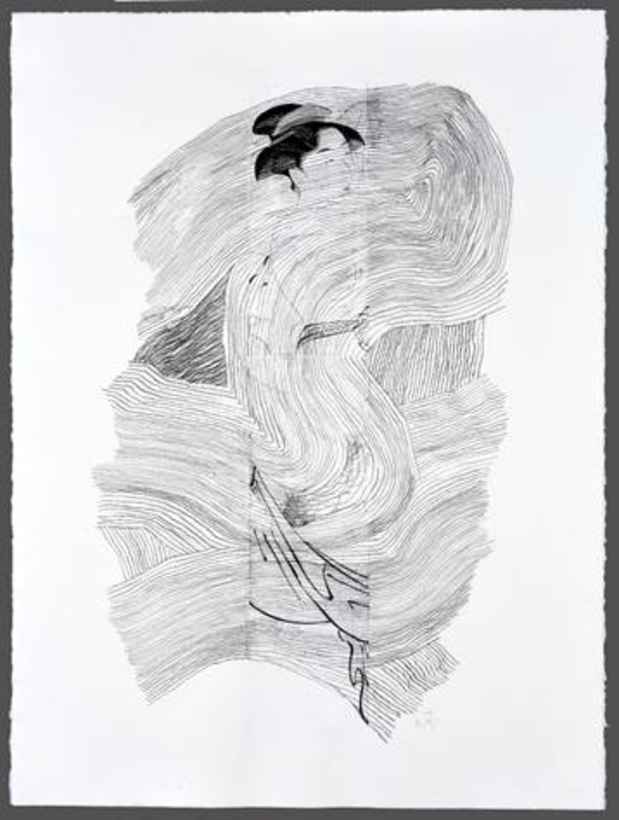Emi Uchida “LINES”
Onishi Gallery

This event has ended.
The work of Emi Uchida first came to my attention about a year ago. I encountered it at a contemporary art exhibition that I curated on the island of Shikoku, Kompira Art 2008 Toramaru Shachu. Uchida was among 13 individual artists and 1 collaborative unit that exhibited works in a traditional Japanese inn, the Toramaru. Each exhibitor had a guest room of their own to present their work in the manner of a one-person show.
Kototohira, the town where Kompira Art 2008 Toramaru Shachu took place, bears the name of a patron deity of seafarers. An eponymous shrine dedicated to that deity has attracted numerous worshippers from throughout Japan for hundreds of years. The shrine and town have been especially popular with authors and artists since the Edo period (1603 to 1868).
Uchida deployed a memorable installation in her room at the inn. She hung abstract paintings on the walls and arrayed Japanese cushions on the tatami-mat floor, and a procession of tiny kewpie dolls stretched over the cushions and out into the hallway.
Especially striking were Uchida’s paintings. From a distance, they offered the appearance of intermingled planes of color. But on closer inspection, they revealed a dense interplay of lines suggestive of a network of nerve cells. Accompanying the overlapping of lines were brief swatches of red, blue, yellow, and other colors.
The impression conveyed by the painted surfaces was of space exploding into infinity. Here were the neural networks of the human body connecting with the unbounded expanses of the universe and transporting with them the viewer. The familiar segued spectacularly into the ineffable.
Uchida titled the painting series Trace. “I use an eraser to delete what doesn’t sit right with me or seems somehow wrong,” she writes. “And when I can’t erase something completely, I obliterate it with lines. That’s a way of rejecting the past. And the remnants of the past rejected sometimes assume an interesting form.”
Thus does rejection and obliteration by the artist spawn new content. Continual destruction was a mode of creation for the 20th-century masters Matisse and Picasso, and Uchida reminds us anew of the artistic potential of creative destruction.
In Uchida’s most-recent works, we find collages and drawings reminiscent of the shunga erotic works of Edo-period ukiyoe woodcut artists. “I have long been a fan of rakugo [a comical-storytelling entertainment that became popular with townspeople during the Edo period]. And that drew my attention to other elements of Edo-period popular culture, such as shunga.” Although shunga could be notoriously explicit, the artists sometimes obscured the sexual depictions in a way that resonates with Uchida’s erasing and over-painting.
Uchida also rejects the past, she explains, by adding charcoal-drawn lines to surfaces of otherwise-finished works. That, too, casts the works in a curious new light. The shunga-like images fade beneath Uchida’s organically linear meshes, as if the artist had placed them behind a reed blind. Her technique stimulates our curiosity about what is going on behind the mesh of lines.
Emi Uchida is an artist who continues to augment her palette with new approaches to rejection and obliteration. She offers a refreshing take on the familiar avant-garde method of burying outmoded ideas and building atop them a new artistic edifice. Let us look forward to the cosmic architecture that will emerge in the evolving oeuvre of this uniquely new-old artist.
By Yoshio Kato, Independent Curator
[Image: Emi Uchida "Utsusemi" (2009) charcoal and collage on paper, 30 x 22 1/2 in.]
Media
Schedule
from November 19, 2009 to December 02, 2009
Opening Reception on 2009-11-19 from 18:00 to 20:00